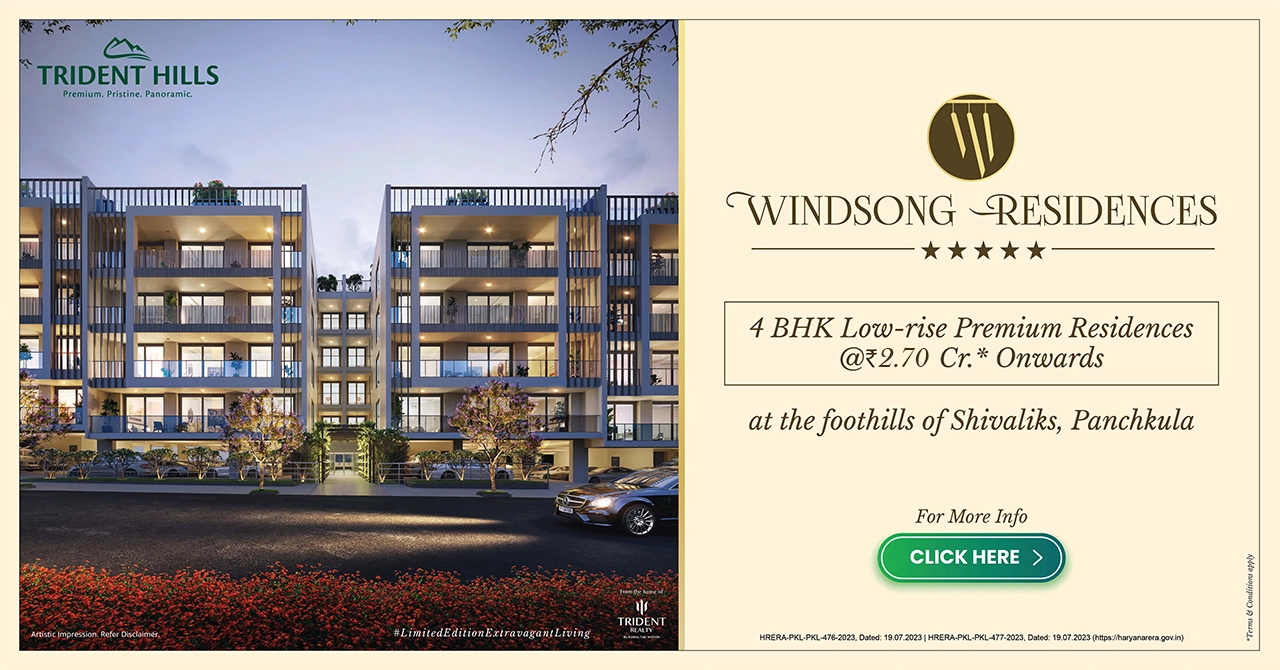
Infrastructure’s Role in Forging Residential Hotspots: Tricity Edition
Urban development in India has long been intricately tied to the evolution of infrastructure, and nowhere is this more apparent than in the ever-expanding Tricity region comprising Chandigarh, Mohali, and Panchkula. Over recent years, Tricity has caught the imagination of homebuyers and investors alike, as infrastructure projects have not only improved the quality of life but also fuelled the dramatic transformation of erstwhile hinterlands into prime residential hotspots. The region serves as a case study for how visionary planning, government support, and the purposeful expansion of physical and social infrastructure can shape real estate demand and future-proof urban growth.
The Roots of Tricity’s Magnetism
The Tricity region’s urban appeal is founded on Chandigarh’s planning ethos—a city conceived by Le Corbusier that remains a template for balanced urbanisation. But the phenomenal spike in residential preference comes from rapid infrastructural upgrades that are now radiating from Chandigarh into its adjoining towns, Mohali and Panchkula. Infrastructure acts not merely as a facilitator but as the actual architect of the region’s residential clusters.
Industry insiders have emphasised that upgrades such as new expressways, airport access, and the anticipated metro rail link are transforming what were once peripheral stretches into zones of high demand and investment. A recent market report by Janta Housing notes, “With improved connectivity through new expressways, international airport, and metro proposals, Tricity’s suburban pockets are increasingly attractive.”
Key Infrastructure Initiatives Redefining Residential Hotspots
Roadways and Arterial Corridors
PR‑7 (Airport Road) has been a game changer for Zirakpur, Mohali, and adjoining sectors, while ongoing NHAI‑led arterial corridors and highways—not new expressways—are easing congestion and improving links to Chandigarh, Panchkula, and Shimla‑bound routes. Key works include the 6‑lane access‑controlled Zirakpur Bypass (~19.2km; ₹1,878.31 crore) approved by the Cabinet under PM Gati Shakti principles, and the IT City (PR‑7)–Kurali greenfield corridor (~31km) under Bharatmala that provides an alternative to Airport Road for Delhi–HP/J&K traffic.Metro Rail Ambitions
Another significant milestone is the Tricity Metro project. Phase I of the Tricity Metro has in‑principle clearances through the UMTA process, with RITES‑led planning placing the network at ~77km and an estimated cost framework around ₹10,570 crore, and development staged over the next decade. Proposed alignments cover Aerocity, New Chandigarh, and Panchkula sectors, which are drawing early interest as the 77km Phase I proceeds through planning and approvals.Smart City and Sustainable Living
Chandigarh was selected under the Government of India’s Smart Cities Mission, with implementation substantially completed before the national mission’s closure on March 31, 2025, delivering mobility, utilities, and urban service upgrades via Chandigarh Smart City Limited. Greater Mohali’s regional decongestion and ring‑road strategy is being advanced via NHAI corridors linked to PR‑7 and UT‑proposed upgrades like six‑laning of Kurali–Siswan Road as part of the broader ring‑road plan.
Changing Dynamics: From City Core to Outskirts
A notable shift is the emergence of once-overlooked areas as the hottest property zones. Where Chandigarh’s tightly regulated sectors have reached saturation with extremely high property rates, adjoining Mohali and Panchkula have surged ahead. New Chandigarh has outperformed with over 70% property appreciation, achieving an average of ₹7,200 per sq ft in 2025. Sectors such as Aerocity, IT City, and PR-7 Airport Road are now delivering twofold returns for early investors in integrated townships.
The Hindustan Times, quoting property industry leaders, highlights, "People working in Chandigarh are increasingly buying homes in Mohali, where property is comparatively more affordable… Demand for both residential and commercial properties is high in Mohali. People living on rent now prefer owning a home in well-developed sectors of the district.” This has been further propelled by the saturation and limited options in prime Chandigarh sectors, sending both homebuyers and developers across borders.
Data-Driven Surge: Market Insights
Residential property growth is borne out by the numbers:
Mohali posted a residential price growth of 9.9% year-on-year at the end of Q1 2025. Aerocity led, with rates surging more than 70%; sectors 79 to 85 saw over 80% increases in rates.
By the end of 2024, property prices in Mohali and Panchkula ranged between ₹6,000–₹10,600 per sq ft, with high-end apartments fetching up to ₹18,000 per sq ft.
New Chandigarh recorded a remarkable property value appreciation rate of 70.5% in the past year, driven by planned development and improved amenities.
Such exponential growth is directly linked to infrastructure projects. The influx of professionals from Delhi, Ludhiana, and even abroad (notably the Punjabi NRI community) has further pushed demand, especially in gated societies and luxury developments with modern security and amenities.
Real Growth Data: Panchkula & Mohali in Numbers
Infrastructure and Livability: The Lifestyle Connection
For today’s homebuyers, improved infrastructure is synonymous with elevated quality of life. Leading developers and planners assert that newer residential enclaves now place a premium on landscaped townships, high-security gated complexes, and easy access—not just to companies, but to healthcare, sports, education and leisure. These are being actively enabled and connected by the urban development blueprint.
For instance, smart city initiatives are integrating digital services and green technologies within projects, while the improved road network ensures that medical and educational facilities are never more than a short drive away. This was confirmed by Mukul Bansal, Managing Director at Motiaz, in Business Standard: "Road expansions, smart city initiatives, and high-speed connectivity are transforming this region into a model for urban development. The real estate market here is witnessing an influx of both local and international investors who recognise the strategic importance of this connectivity.”
Government Policy and Commercial Ecosystems
It is not just the highways and metros—state-supported incentives, regulatory reforms, and the march of commercial development are closely tied to the residential surge. Chandigarh’s Technology Park and Mohali’s IT City zone have unleashed a wave of job creation, attracting both businesses and employees. This, in turn, has spurred demand for quality residential spaces nearby, reinforcing the critical link between infrastructure, commerce, and residential growth.
Furthermore, transparency initiatives like the Real Estate Regulatory Authority (RERA) compliance and the Smart Cities Mission encourage investor confidence and ensure long-term sustainability of this growth.
Emerging Hotspots: Where to Watch
For those tracking the next wave, the following micromarkets stand out in 2025:
Aerocity (Mohali): Proximity to international airport, metro plans, mixed-use developments, high rental yields due to demand from professionals and travelers.
New Chandigarh: Planned layouts, top-tier connectivity, and eco-friendly design have made it Tricity’s fastest-appreciating market.
PR-7 Airport Road & IT City: Massive infrastructure upgrades, attracting both NRI and domestic investors, delivering strong ROI for new township developments.
Zirakpur: Benefitting from the ring road and airport link, now a magnet for both affordable and luxury segments, especially with traffic congestion set to ease.
Panchkula: Gaining from the region’s green appeal and connectivity to Mohali and Chandigarh, seeing a surge in villa and high-end home demand.
Trident’s Strategic Alignment with Growth Corridors
Developers that align their projects with major infrastructure investments are best positioned to unlock value for both residents and investors. For instance, in Panchkula, projects near the widened corridor benefit from seamless access to Chandigarh and thriving social infrastructure. In Mohali, both mid-segment and luxury gated communities close to the airport and expressways are fetching higher valuations in line with infrastructure investments and improved connectivity.
Trident Realty’s strategy of targeting micro-markets such as Panchkula and Mohali places its offerings at the confluence of these growth drivers. The focus on amenity-rich, community-centric developments leverages:
Expressway Access: Allowing commuters to reach city centres and workplaces quickly.
Airport Proximity: Benefitting business travellers and NRIs, who form a significant share of the high-value buyer base.
Planned Metro Corridors: Future-proofing projects against the next wave of infrastructural enhancement, ensuring sustained appreciation and demand.
The Road Ahead
Major projects like PR‑7 linkages, new metro corridors, and smart‑city upgrades will do more than ease travel — they’re set to spark new business districts, tourism growth, and retail/hospitality expansion.
Mohali’s IT City and Chandigarh’s Technology Park will drive a jobs → housing demand → talent attraction cycle, creating a self‑sustaining growth loop.
Expect allied sectors such as education, healthcare, and leisure to see parallel investment and development.
Continued policy push for multimodal transport and sustainable city frameworks will be key to ensuring inclusive and eco‑friendly growth.
Stakeholders who anticipate second and third waves of infrastructure‑led expansion — not just the current boom — will be best positioned for long‑term gains.
Conclusion
Tricity is no longer just a promising market — it’s a fast‑moving opportunity. With landmark infrastructure projects transforming connectivity and lifestyle, micro‑markets here are already delivering record‑breaking returns. For buyers, it means securing a home in one of North India’s most liveable regions; for investors, it’s the chance to ride the next big wave of appreciation. The blueprint for the future is already being laid — the best time to be part of it is now.









